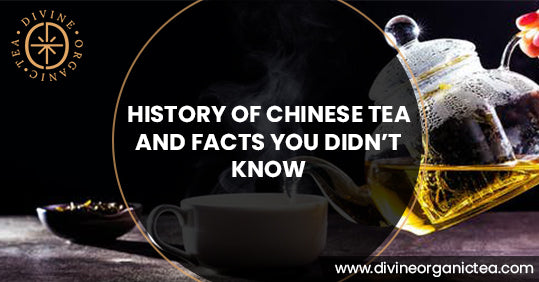History Of Chinese Tea And Facts You Didn’t Know
Tea is one of the oldest drinks, which is still indispensable in any European family, not to mention the Celestial Empire. Its origin is shrouded in myths and legends, different peoples have developed their leave tea traditions. In this blog, we will take a closer look at the drink and find out where the history of tea began and how it conquered the world.
Tea, as a plant, was widespread not only in the Middle Kingdom: experts found wild tea bushes in India, the Himalayas, and Tibet. But the history of tea as a drink began in China and has been going on for over five thousand years.

The most adored drink in the Celestial Empire now, of course, is tea. The history of the origin of infusion from tea leaves began in this country. According to one version, the drink was invented by the emperor Shen-nong, who is also called the "king of medicines." It all happened by accident: a few dry leaves from a tea bush got into a pot of boiling water. The emperor appreciated the taste and invigorating effect of the drink. Since then, the history of Chinese tea began, they began to drink it with pleasure throughout the country.
According to another version, the history of the emergence of tea is associated with shepherds. They grazed cattle on the slopes of the mountains and noticed that the tired animals were nibbling the leaves of the bush, after which they were full of energy again. The shepherds also decided to taste the tea leaves by adding them to boiling water and appreciated the drink.
‘’At first, the tea was pressed and dried. The drink was considered a medicine, it was originally brewed. Tea shops, where you could buy tea briquettes, appeared in China as early as the Jin era - in 265-420.’’
The more traditional history of tea, when it was harvested as a whole leaf product or powder, began in the Song era, around the 12th century. It is interesting that once the Chinese masters steamed Chinese Tea and only then began to fry the leaves. This technology was borrowed by the Japanese and is still used today, for example, to make the famous green matcha tea.

Spreading Tea
The history of Chinese tea has influenced many countries. Thanks to the development of interstate relations with China and Buddhist monks from the 9th century, the drink became known in Japan. It began to spread among the general population in the 13th century, and since then a unique cult of tea has formed in the country and the rules of the tea ceremony have appeared.
“In Europe, the history of Green Tea began in the 16th-17th centuries, the drink was first brought by Portuguese and Dutch traders. Black tea is especially popular in England. The volume of supplies to the country was growing, due to which its cost decreased, and the drink became available to the common population.”
India is considered the second home of tea, but little reliable information has survived. The first mentions of a medicinal drink made from tea bush leave date back to the 7th-5th centuries. BC, therefore, the history of the appearance of tea in the world remains ambiguous. Mass production of tea in India began only in the 19th century.
Origin Of Name
The familiar word “tea” comes from the Chinese “cha”, which means “young leaf”. Why this drink is called “tea” in European countries?

The fact is that the Chinese character, which means "tea", sounds differently in different provinces. Tea was exported overland from northern China, where the drink is called cha. Therefore, the word “tea” has taken root in Russia, Persia, India.
Tea was delivered by sea from the southern provinces of China, where the name sounds like “ti”. Therefore, this version was fixed in the languages of France, England, and Germany.
Tea is a healthy drink with a rich history that is shrouded in a train of legends. He played an important role in the development of cultures and traditions of different countries and today remains a favorite drink for many families.
In Europe, they drink mainly green and black teas, including those with additional aromatization. In China, other types are also made: Pu-erh, White, yellow, turquoise. There, tea is rarely ground, and only natural flowers and herbs are used as aromatic additives. For example, rosebuds, chrysanthemum petals, jasmine, and young bamboo shoots.
Conclusion
Tea has a rich history that spans many cultures and countries. We hope you learned something new about the origin of tea in this article, as well as how to brew it for your family members or employees at work! Whether you drink green, black, white, yellow, turquoise, or Pu-erh tea - we want to hear what type is your favorite! Comment below!

